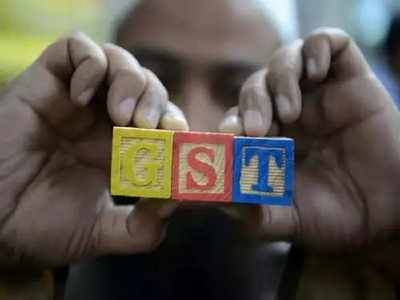- News
- Business News
- India Business News
- With a 42% fall, Uttarakhand sees sharpest drop in GST mop-up
Trending
This story is from September 23, 2020
With a 42% fall, Uttarakhand sees sharpest drop in GST mop-up

Representative image
NEW DELHI: Uttarakhand has suffered the sharpest yearon-year fall of 42% in GST collections in the March-July period, shows data released recently in the Lok Sabha. Goa too saw its collections dip nearly 40% and Daman & Diu and Mizoram were next in line among the worst hit.
In response to a question last week, the government put out data on state-wise GST collection from domestic transactions, which shows significant revenue losses in 34 of the 36 states and UTs for the March-July 2020 period as compared to the same months in 2019.
Among the larger states and UTs, Jharkhand, Jammu & Kashmir (including Ladakh), Delhi, West Bengal and Tamil Nadu, all saw their collections dip by between 34% and 38%. The total for all states fell by 29% year-on-year.

Most of the country’s large states saw their GST collections falling by 20% or more year-on-year (see graph). However, the revenue loss was lower in less industrialised states like Bihar, Madhya Pradesh, Odisha and
Chhattisgarh was the only large state among the five states and UTs which saw GST collections dipping by less than 20% in this period. The other four were Arunachal Pradesh, Lakshadweep, Andaman and Nicobar Islands and Sikkim. Surprisingly, GST collections in Nagaland and Tripura saw a minor increase over the previous year.
The response to the question also stated that for April-August, net direct tax collections were 31.1% lower than last year while indirect taxes reduced by a relatively lower 11.2%. The government attributed the declines to the lockdown and relief measures for taxpayers like waiving the interest and late fee and extending the return filing dates.
In response to a question last week, the government put out data on state-wise GST collection from domestic transactions, which shows significant revenue losses in 34 of the 36 states and UTs for the March-July 2020 period as compared to the same months in 2019.
Among the larger states and UTs, Jharkhand, Jammu & Kashmir (including Ladakh), Delhi, West Bengal and Tamil Nadu, all saw their collections dip by between 34% and 38%. The total for all states fell by 29% year-on-year.

Uttarakhand being the worst hit could be because of the lockdown and the following recession coinciding with the state’s major tourism season. This probably also is the reason for Himachal registering a 34% drop in collections.
Most of the country’s large states saw their GST collections falling by 20% or more year-on-year (see graph). However, the revenue loss was lower in less industrialised states like Bihar, Madhya Pradesh, Odisha and
Assam than in say, Tamil Nadu, Gujarat or Maharashtra.
Chhattisgarh was the only large state among the five states and UTs which saw GST collections dipping by less than 20% in this period. The other four were Arunachal Pradesh, Lakshadweep, Andaman and Nicobar Islands and Sikkim. Surprisingly, GST collections in Nagaland and Tripura saw a minor increase over the previous year.
The response to the question also stated that for April-August, net direct tax collections were 31.1% lower than last year while indirect taxes reduced by a relatively lower 11.2%. The government attributed the declines to the lockdown and relief measures for taxpayers like waiving the interest and late fee and extending the return filing dates.
End of Article
FOLLOW US ON SOCIAL MEDIA















